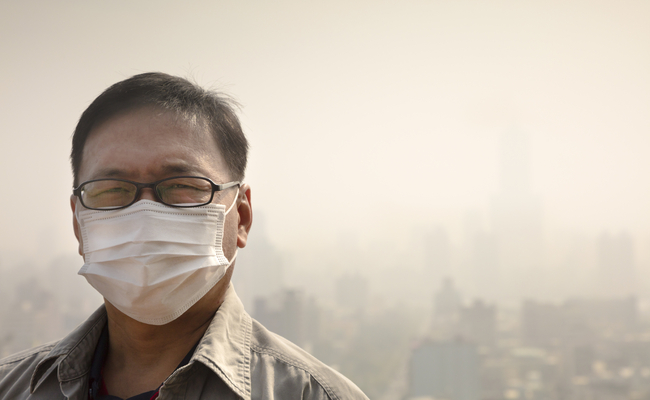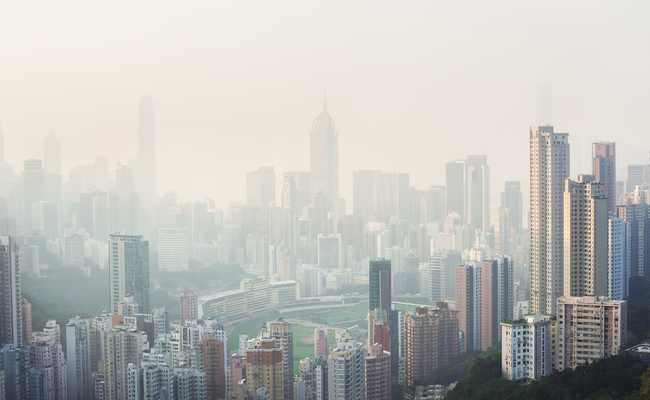
In a bid to cut down on air pollution, the Ministry of Environment announced October 18 that revisions to the enforcement strictures of the Clean Air Conservation Act will be implemented. (Image: Korea Bizwire)
Seoul, Oct. 19 (Korea Bizwire) – In a bid to cut down on air pollution, the Ministry of Environment announced October 18 that revisions to the enforcement strictures of the Clean Air Conservation Act will be implemented.
The revisions will require select categories of newly manufactured diesel vehicles starting at the beginning of next year and that are registered in Seoul, Incheon (excluding Ongjin County) and 15 cities throughout Gyeonggi Province to be inspected for nitrogen oxide emissions when receiving a full checkup anytime after January 1, 2021.
The vehicular categories are: passenger vehicles, 35-passenger minimum transit vehicles, 10-ton minimum GVWR (gross vehicle weight rating) trucks and special purpose vehicles (ambulances, construction vehicles, etc.)
Once the revisions are implemented, vehicles that are found to exceed the prescribed limits for nitrogen oxides emissions will need to have their SCR (selective catalytic reduction) system and LNT (Lean Nox trap), devices used to reduce nitrogen oxide emissions, inspected and fixed.
A Ministry of Environment spokesperson declared the revisions, which reached a unified consensus among government factions as part of a larger regulations package tackling particulate matter, “the world’s first regulations requiring nitrogen oxide inspections of on-the-road cars ”; the United States and European nations allocate such procedures to the pre-release phase of vehicle manufacturing.

Despite the Volkswagen emissions scandal that rocked the auto industry, which drew pledges from major automakers promising tougher inspections on cars, no other nation has introduced legal measures for vehicles that have rolled off the assembly line. (Image: Korea Bizwire)
Despite the Volkswagen emissions scandal that rocked the auto industry, which drew pledges from major automakers promising tougher inspections on cars, no other nation has introduced legal requirements for post-manufacture inspections of nitrogen oxides emissions.
The government estimates that the implementation of its revisions will help reduce 2,870 tons of nitrogen oxide and 195 tons of fine particulate matter (PM2.5) over a decade. This is expected to guarantee 2.2 billion won in saved costs for society.
Any news with a potentially debilitating impact on the future of diesel cars is particularly unwelcome at the moment for the industry. Once heralded for their fuel efficiency, the national concerns over air pollution and the role of diesel cars in its creation has seen them now dubbed as a “headache” and “nuisance”.
According to the industry, the proposed inspection processes are expected to have minimal impact on how such procedures are already being handled.
As of September last year, the domestic diesel car industry had adopted the European emissions standard Euro 6 (minimum 0.08 g/km in nitrogen oxides emissions) from the previously used Euro 5 limit as the ceiling for all cars manufactured henceforth.
Furthermore, in anticipation of more regulations to come, the industry has invested in R&D efforts to lower emissions, giving manufacturers confidence that the installation of in house developed technologies will prevent new vehicles from running afoul of any laws.

On the contrary, the report’s data showed that generally, 70 percent of all particulate matter was generated on foreign soil, pointing to China and even North Korea as major suppliers of air pollution. (Image: Korea Bizwire)
One major automaker insider said, “Although a specific, permissible limit of nitrogen oxides during full checkups has not yet been stated, as long as it isn’t a case where the worst driving habits like making sudden accelerations and stops are combined with long term negligence [of the car], the probability of cars manufactured after January 1 next year being detected during later inspections is low.”
This does not mean that the industry is nonchalant in regards to prospective regulations; any changes in testing require automakers to make significant changes to the overall system of a car, costing more money, which in turn drives up prices, reducing their appeal to prospective customers.
With the number of diesel cars in proportion to total car sales on a steady decline at 36.4 percent in the first half of the year, the lowest level since 32.4 percent in 2013 (entire year), it is understandable that automakers are disgruntled by the announced regulations, with some criticizing the government for using diesel cars as a convenient scapegoat for air pollution problems, when the bulk of the blame in actuality rests with China.
Such views are supported by a report on air pollution by the National Institute of Environmental Research, which was summarized and published by JoongAng Daily.
The data in the report contradicted the government’s proposals that particulate matter from foreign soil on average comprised 30 to 50 percent and rose to 60 to 80 percent only during winter peak times.

Be that as it may, like the geopolitical tensions involving North Korea, the path to a solution, regardless of any “first of its kind” system and the rise or fall of the diesel car industry, leads to Beijing. (Image: Korea Bizwire)
On the contrary, the report’s data showed that generally, 70 percent of all particulate matter was generated on foreign soil, pointing to China and even North Korea as major suppliers of air pollution.
The report concluded by stressing the importance of negotiations between China and South Korea to truly make a dent in particulate matter levels.
As has been well publicized, relations between the two countries are troubled, as the installation of U.S. THAAD (terminal high altitude area defense) missile systems as a defensive bulwark against potential North Korean aggression has been met with a general ban on various South Korean goods.
Be that as it may, like the geopolitical tensions involving North Korea, the solution to air pollution, despite the South Korean government’s claims of “first of its kind” system or the development of new technologies by the auto industry, seems to lie in one place: Beijing.
S.B.W. (sbw266@koreabizwire.com)






![[Feature] Elections Decided by Candidate Children’s SNS Messages [Feature] Elections Decided by Candidate Children’s SNS Messages](http://koreabizwire.com/wp/wp-content/uploads/2014/06/cho-facebook_02-370x222.png)